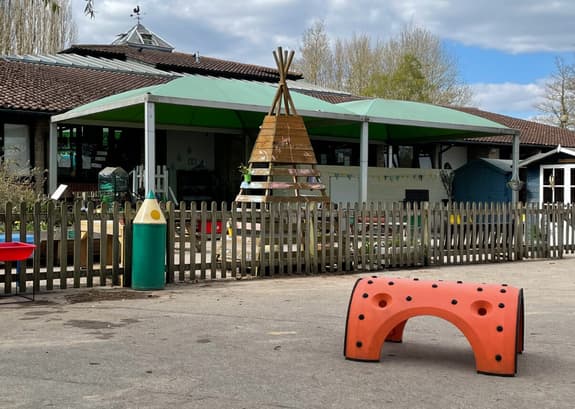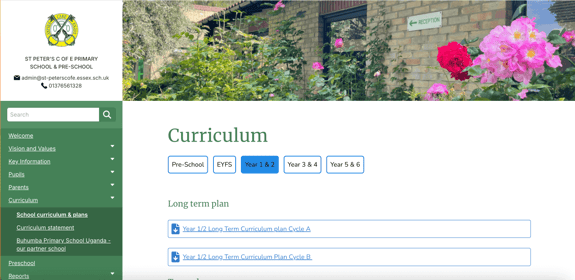St Peter's School.
A well-established and reputable local primary school based in Coggeshall, Essex
Project overview.
Client: St Peter's School
St Peter’s C of E Primary School and Pre-School is a well-established and reputable local primary school based in Coggeshall, Essex. They have a great profile within the community, providing a fun and engaging learning experience for their pupils, giving particular attention to the promotion of strong ethical foundations through a long partnership with the local parish.
The St Peter’s headteacher had received feedback that previous current website was hard to navigate and not user-friendly, especially on mobile. This caused issues for staff because parents were constantly calling to find out information, due to the fact they couldn’t find it online. Furthermore, while the website had been built many years ago, they were still paying a high fee every few years to keep the website active.
The school engaged us to help them create a new website that would meet the needs of parents and the school, and would reduce their ongoing spend.
Scope of work.
- Website design
- Website development
- Accessibility
- Website maintenance & support
- Laravel
- Hosting
Building the school website.
We initially arranged meetings with parents (the primary users) to discuss how they currently use the website and how they would like to be able to use the website in the future. We also spoke with the headteacher to ensure the website covered all statutory points.
The feedback led us to create an easy-to-use large menu format and a simple homepage design. The pages on the website were all built using flexible blocks with a custom, easy to use CMS, developed using Laravel. This meant staff could easily add pages as required.
Finally we created new tools, such as the events calendar and curriculum builder, which were designed specifically with mobile in-mind. These tools provided a streamlined and simple way for parents to see upcoming events and their child’s curriculum. The curriculum page also made switching between children of different ages easy, which had previously been a challenge for parents who have different children in different year groups.




Project results.
The feedback from both the school and parents of students has been overwhelmingly positive. The lines of communication between the school and parents have dramatically improved.
The number of calls having to be dealt with has dropped and teachers are able to add new content themselves, without having to give up a significant amount of time for this task. The events calendar is more widely used and information on the website is clearly laid out for new users to learn more about the school.
Miss Wilding
Headteacher | St Peter's School
















